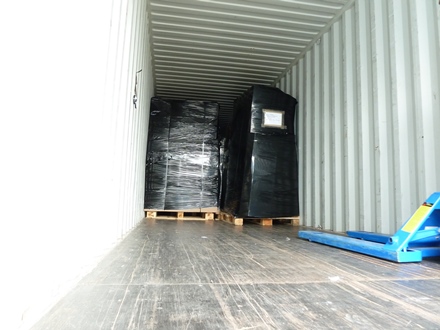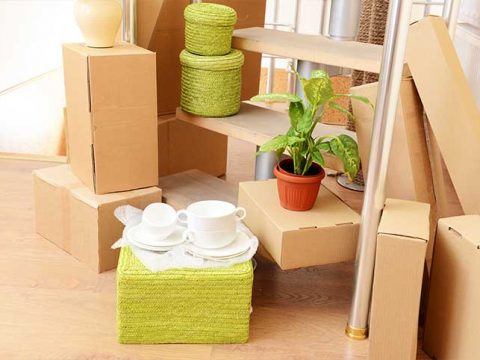- Have any questions?
- 1-201 254-9477
- info@bestguymoving.com

What is EIN # and why do i need it?
January 28, 2014
Shipping In A Sea Container
March 21, 2014 There are two ways to send a shipment overseas via ocean freight. One is in an exclusive container and the other is via consolidation services. This article will discuss the consolidation services.
There are two ways to send a shipment overseas via ocean freight. One is in an exclusive container and the other is via consolidation services. This article will discuss the consolidation services.
The idea behind consolidation containers is to load few small shipments to destinations in proximity to one another, in one large container.
That way, the shippers can share the cost of the ocean freight and reduce the overall cost of their move.
The sizes of a shipment loaded in consolidation container vs. an exclusive container vary depending on a few details:
The cost of the ocean freight to the destination country – The more expensive ocean freight is, the more you save in sharing a container with others.
The distance of the origin and destination addresses from the port – The container is always loaded and unloaded at one point. Naturally, that point is close to a port and the shipments need to be transported to and from the port via land transportation. The larger the shipment—the more expensive the land transportation.
The timing needs of the shipper – when will the client be available to receive the shipment at the destination. If the client needs more time, then consolidation service might be a better solution.
If we focus on the cost of shipping, shipments that are smaller than 500 cu ft. will most likely be cheaper using a consolidation container. Shipments that are 500 – 800 cu ft. might, or might not, be better off when sent via consolidation, depending with the above-when sent in an exclusive container.
Price is not the only consideration in deciding whether to send a shipment in a consolidation container. Transit time of the shipment to destination is often an important consideration.
The process of shipping in a consolidation container  is more time-consuming than shipping an exclusive container. We already discussed that the land transportation, the distance of the shipper’s origin and destination addresses to the port of exit and the port of entry might significantly affect the transit time.
is more time-consuming than shipping an exclusive container. We already discussed that the land transportation, the distance of the shipper’s origin and destination addresses to the port of exit and the port of entry might significantly affect the transit time.
In addition to that, the forwarder needs to collect enough shipments to fill a container. A container will not ship unless it is full. The amount of time it takes to amass enough shipments to fill a container depends on the season (summers are always busier than winters) and your mover. Some movers have steady volume throughout the year, while some do not. Finally, consolidation containers take a bit more time to clear customs than exclusive containers at the destination.
The long transit time might be a disadvantage for some, but it can also be a huge advantage for shippers that need more time to find housing/work at the destination. When more time is necessary, most shippers will offer some free storage time at both the origin and destination.
How does it work?
Your mover/forwarder uses a main warehouse near a port. This warehouse is called a “hub.” Shipments from the region are sent there. Consolidation shipments are usually sent in a 40 ft. high container which is the largest (easy to find) container. When the warehouse has enough shipments to fill the container they schedule a loading date
 It is important to check with your mover as to how your shipment is loaded to the container. The consolidation shipment will be handled few times, and stored in at least two warehouses before arriving at the destination. BestGuy Moving recommends sending the shipment in large bulky packages (prepared by the movers), instead of having to handle each box and item repeatedly. It is done once, and from that point on, loading and unloading is done with a forklift. Our approach is that the fewer times the box with your china or the small antique end table is handled, the less chance there is of loss or damage.
It is important to check with your mover as to how your shipment is loaded to the container. The consolidation shipment will be handled few times, and stored in at least two warehouses before arriving at the destination. BestGuy Moving recommends sending the shipment in large bulky packages (prepared by the movers), instead of having to handle each box and item repeatedly. It is done once, and from that point on, loading and unloading is done with a forklift. Our approach is that the fewer times the box with your china or the small antique end table is handled, the less chance there is of loss or damage.
Preparing the bulky package is done by either stuffing the shipment into lift vans (large wooden containers) or organizing the shipment on wooden pallets. Both methods will add extra protection to the shipment, prevent the multiply lifting / shifting / handling of each item in the shipment and be easier to control throughout the long journey to destination
At destination, an agent for your mover will handle the custom clearance and pull the container to their warehouse. There, they will unload the different shipments and arrange ground transportation to the different final destination.





